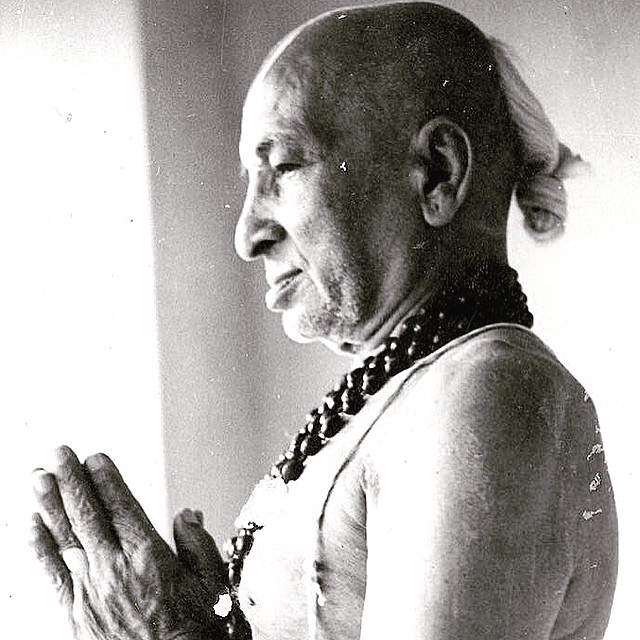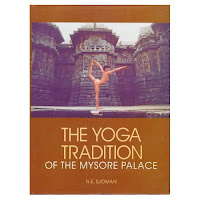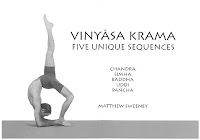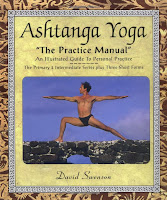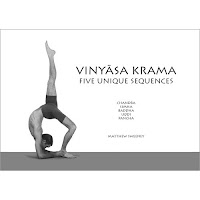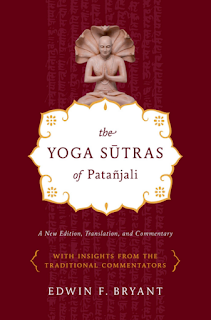During January I went to Dubai to teach a 5 day 30 hr yoga program at Yash Saran's beautiful facility called 136.1 yoga. I taught core vinyasas for about 20 hrs and the balance 10 hrs were on Pranayama and Yoga for internal organs. It was a small number of participants but they all participated fully
Then from January 14 to 29th I was in New Delhi to teach a 100 hr Advanced vinyasakrama TT yoga program. There were more than 30 participants about a third of whom were from outside India. The program had a large chunk (60hrs) of asana vinyasas. Several hundred vinyasas in scores of asana subroutines encapsulated in ten major sequences were taught and practised. Vinyasas done with proper breathing help to stretch the entire skeletal system. All the major skeletal muscles can be accessed by a proper selection of vinyasas on a daily regular basis. Additionally they help to stretch and create a little more intra-articular space helping the mobility of major joints and the spine. The participants also did a few important asanas that require a considerable time of stay like the Sirshasana, sarvangasana, paschimatanasana and others. Since all were long time yoga practitioners and teachers the level of participation was quite deep and intense. Many managed to stay in major postures like sirsasana, sarvangasana, paschimatanasana, mahamudra and bhagiratasana for even upto 10 minutes. One Sunday many performed 32 suryanamaskara to the chanting of Aruna or suryanamaskara mantras from yajur Veda.
Then there was the 20 hour abhyasa of pranayama, something which is not given its due by contemporary yogis. Considering hatayoga (union of prana and apana) means pranayama, many paid considerable attention to the study and practice of pranayama. It was heartening to find that many were able to consistently do 80 times viloma ujjayi over a continuous period of 40 to 45 minutes. The program also included a lengthy study of the effect of several yoga techniques towards improving the health of important internal kosas or vital organs. The study included the effect of yoga on heart (hrudaya kosa) and the circulatory system (rakta sanchara), the lungs (svasa kosa) and the respiratory system (prana sanchara), stomach (anna kosa) and the digestive system, intestines (mala losa), kidneys/bladder (mutra kosa) and the urinary system and uterus (garbha kosa) and the reproductive system. Then the nervous system and the spine, the brain as a piece of organ and also the functioning of the brain also known as citta vrittis were also part of the study. Yoga has a few limited but very powerful techniques as vinyasas, asanas, kriyas, pranayama, various mudras and bandhas and meditation all backed by a very strong yoga philosophy. It has a very wide range of applications for physical and mental health.
Then there was the 20 hour portion of study of yogasutras. We went through all the sutras in the four chapters and many paid very close attention to the entire treatment of Rajayoga or yoga of enlightenment by Patanjali.
I had taught the same program in Chennai at Saraswathy Vasudevan’s Yoga Vahini during November/ December 2015 which was attended by about 35 people. There was some disruption due to the unprecedented rains and unfortunate flooding in Chennai, but still many people managed to attend all the sessions despite enormous difficulties. Again the participation was excellent and it was a great joy to work with such committed yogis and yoginis.
I intend to repeat this program in a few other places during 2016. Between April 16th and May 1st I will be teaching this program at my friend Ryan Leier's Oneyoga studio in Saskatoon in Canada.
Then later on between August 23rd and September 8th, I will b teaching this program at Loyola Marymount University where I have been teaching the 200 hour TT program for the last almost 10 years.
Then between September 24th to October 8th or so, I will be teaching this program in Madrid, Spain at Blanca San Roman’s studio. Blanca attended the 100 hr program in New Delhi recently and had also earlier attended a shorter program in London.
I am also doing shorter programs at Yogashala Connecticut (May 2016) Blue Point Yoga in Raleigh, North Carolina (May 2016), Chicago Yoga center in Chicago (Sep 2016) and my friend Sriram's place in Germany in Aug 2016. Please refer to the Events page of my website www.vinyasakrama.com/Events for more details as and when they become ready and posted
अध्यात्मविद्या
adhyātmavidyā
Bhagavan Sri Krishna in the bhagavatgita refers to vidyas or bodies of knowledge. There are hundreds of vidyas that teach us about the various aspects of the universe, its function and those that make our lives happier. However there is very little that is done to systematically study about our own selves. This vidya is called adhyatma vidya and the Lord considers that of all the vidyas he is adhyatma vidya or we may say that the Lord considers this knowledge about the self is the highest or the most important. Many vedic philosophies especially samkhya, yoga and vedanta are said to concentrate on this. Vidya. While there are differences in the ultimate analysis about the nature of the self like if the self is one or many, they all say that the common understanding of the nature of self, an acceptance without any thought or reflection about the nature of our self as nothing other than our body/mind complex is erroneous, popularly expressed by the term 'avidya'. Samkhya, yoga and vedanta attempt to remove the avidya about oneself and help realize the real nature of oneself. This vidya or knowledge is Adhyatma vidya.
While vedanta and samkhya generally explain the correct nature of the Self, the step by step approach starting from where one's understanding/misunderstanding about the Self is, is undertaken meticulously by Yoga. The body/mind complex which is considered to be the Self by default by everybody however itself is the means by which one has to understand the self. Thus Patanjali before starting his detailed presentation of the classic, 'Ashtangayoga', describes the body/mind system as drisya or the 'seen self'
which is the starting point of analysis of the self. The drisya is made of many prakritic tatvas. It is made of three gunas, satva, rajas and tamas. It is also made of the five bhutas or the gross elements of nature, viz., solid, liquid, gaseous matter apart from heat or fire and occupies space (prithvi, ap, tejas, vayu and akasa). Then it has 13 indriyas .
प्रकाश क्रिया स्थिति शीलं भूतेन्द्रितात्मकं भोगापवर्गार्थं दृश्यम्।
prakāśa kriyā sthiti śīlaṁ bhūtendritātmakaṁ bhogāpavargārthaṁ dṛśyam|
prakāśa kriyā sthiti śīlaṁ bhūtendritātmakaṁ bhogāpavargārthaṁ dṛśyam|
The overwhelming majority of the populace use this drisya atma or the 'seen self' for various experiences , happy and unhappy by doing varying activities or karma some good, some bad and many mixed (three types of karmas). But the yogi first does yogic karma which is said to be non-binding as it has no prakritic or bhoga motivation and is directed towards first reducing/removing the non yogic gunas as Rajas and tamas through a proper mix of yamaniyamas on one hand and asana, pranayama and pratyahara on the other. Only a satvic mind can really remain focused and in a state of samadhi to directly experience the self, This yogic procedure of rolling back the involvement with the outside to derive worldly and other worldly experiences is termed as 'apavarga' by Patanjali. Thus Patanjali stressed the importance of maintaining the drisya atma or the pseudo self in good condition so that it can be refined and put to yogic use.
The real self, the observer, also known as Atma, purusha, chit, pratygaatma, drashta, drikshakti is pure unwavering consciousness that observes everything presented to it by citta as cittavrittis. Patanjali brilliantly describes the state and nature of the adhyatma as
द्रष्टा दृशि मात्रः शुद्धोपि प्रत्ययानुपश्यः।
draṣṭā dṛśi mātraḥ śuddhopi pratyayānupaśyaḥ|
The seer/self is only seer or awareness, pure (uncontaminated by any of the prakritic gunas as satva, rajas or tamas). Even so it is required to observe all that is presented by citta as a cittavritti. And the Self never undergoes any change as it is pure awareness; the cittavrittis are always known to the self , still unchanging and hence immortal
सदा ज्ञाताः चित्तवृत्तयः तत्प्रभोः पुरुषस्य अपरिणामित्वात्।
sadā jñātāḥ cittavṛttayaḥ tatprabhoḥ puruṣasya apariṇāmitvāt |
All these sastras, the nivritti sastras strive hard to show how our perception of what constitutes the self is flawed and by logical step by step approach show what is the real nature of oneself. Once the mind is able to overcome this erroneous but very common perception of oneself is removed, then one sees oneself and the world clearly as they are and is said to attain freedom or kaivalya or moksha. This vidya or the knowledge of the self, the Lord says, is the most important from his perspective. And yoga is the system that goes about methodically to lead one to this understanding and subsequent realization
Sincerely
Srivatsa Ramaswami
P S If you like the article please share it with friends . Tens of articles are in my previous newsletters, may be accessed from











.jpg)










